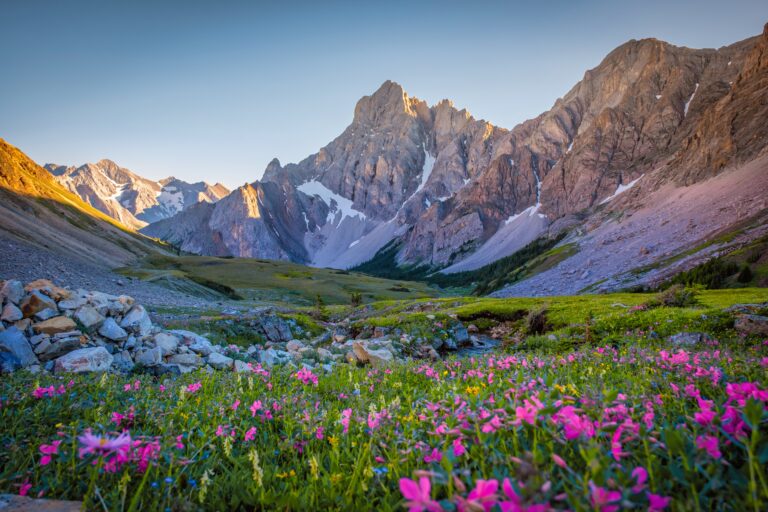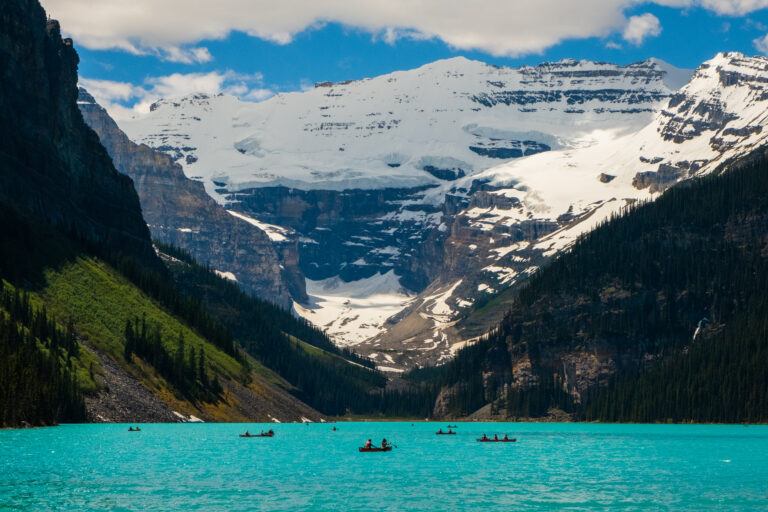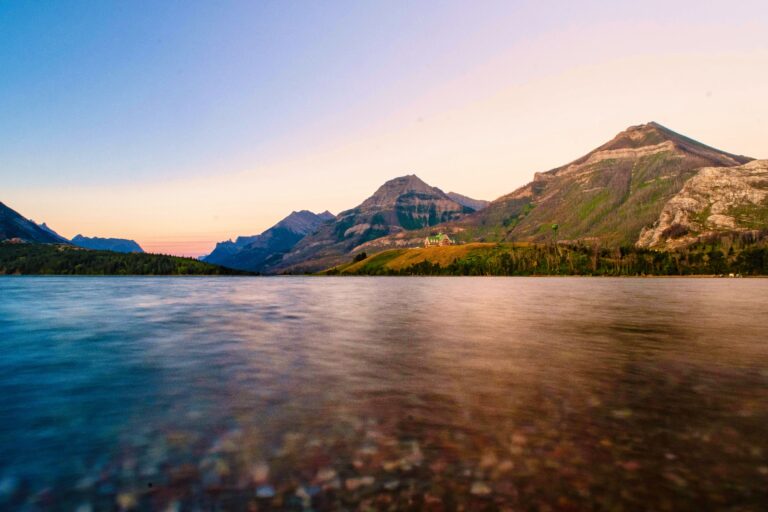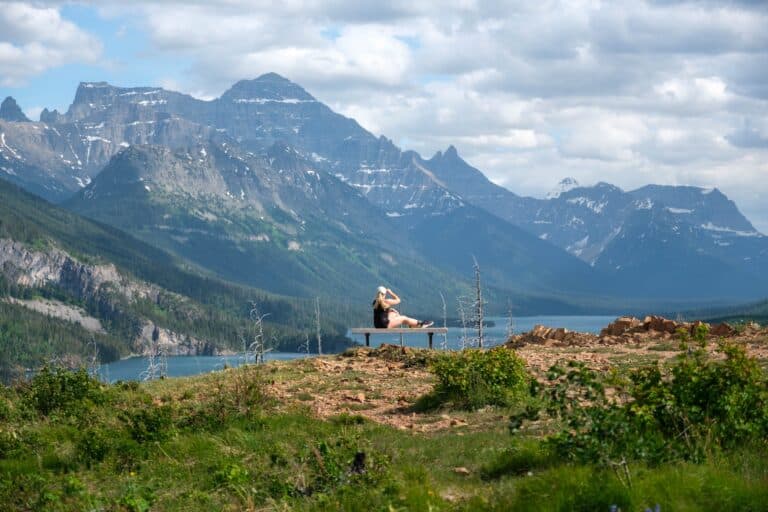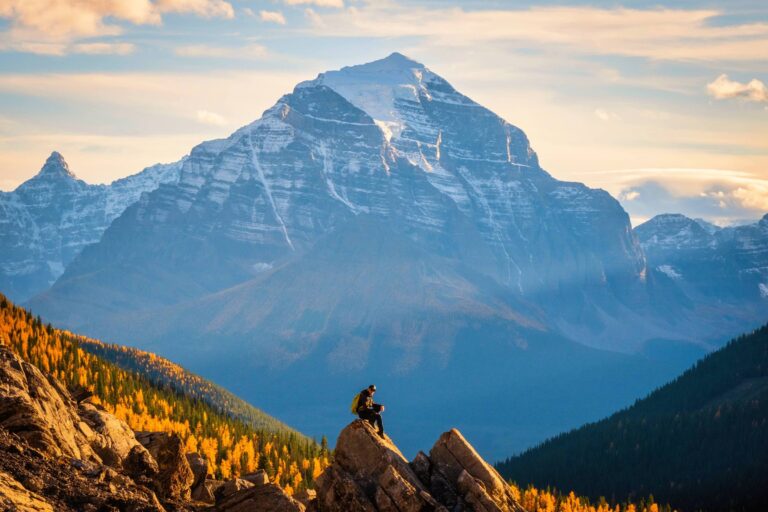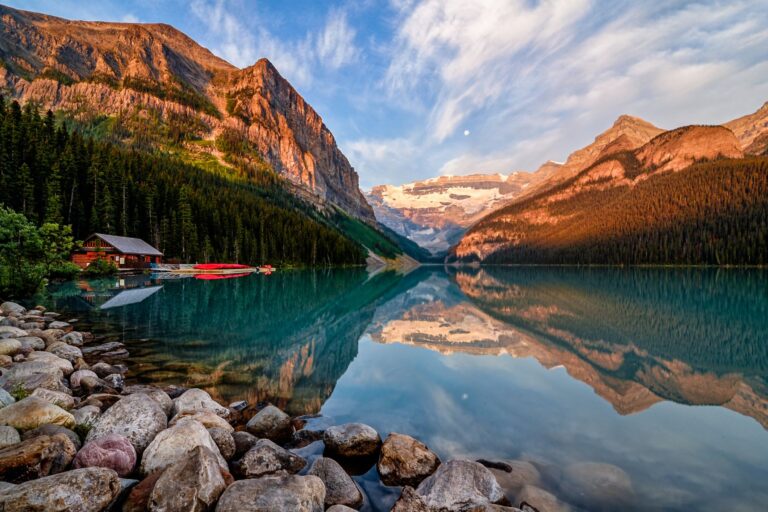Where & How To See Northern Lights In Alberta
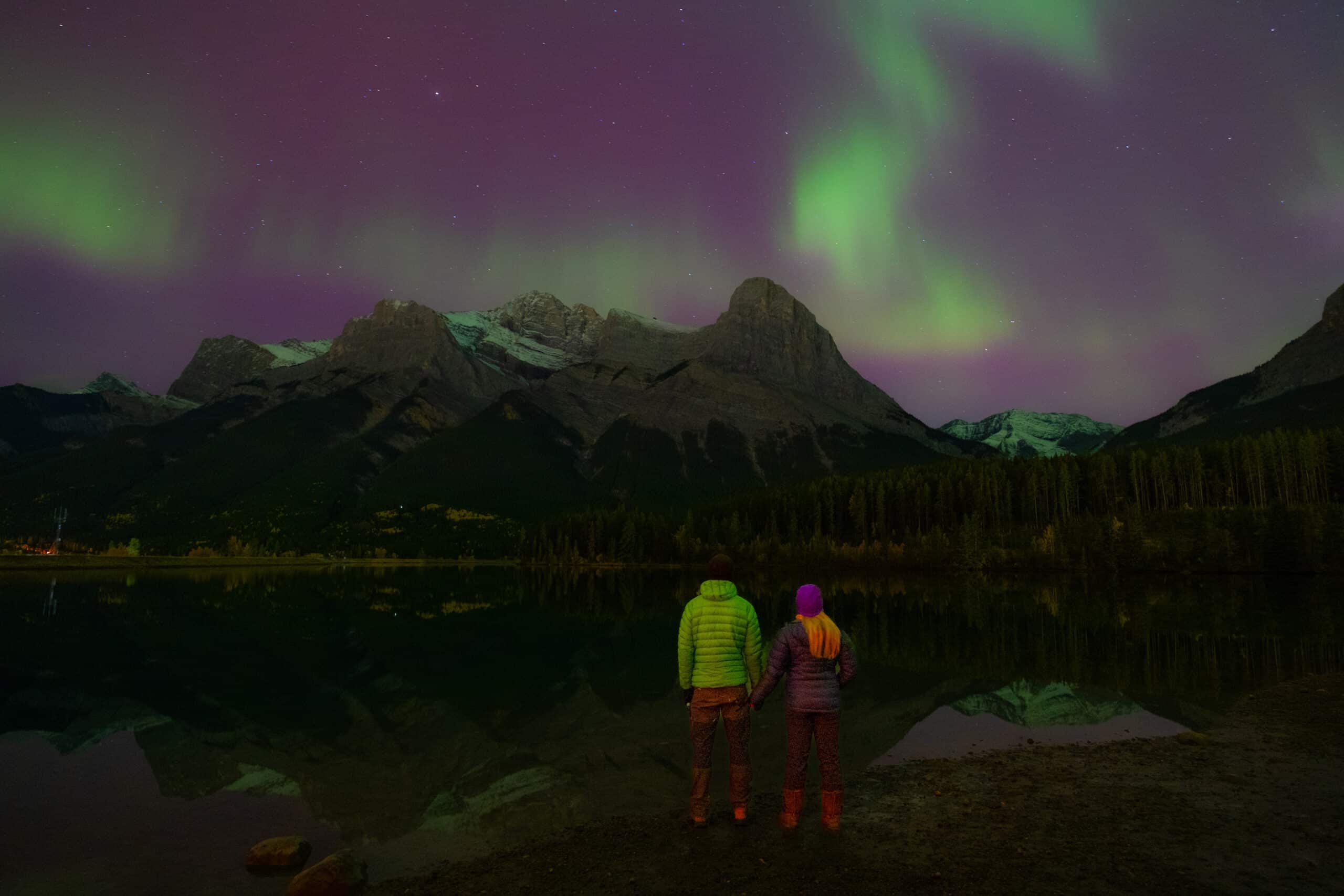
If you’re wondering if you can see the northern lights in Alberta, the answer is yes! As we were not born in the province, we were surprised when we first came to Alberta and learned this. The best chance to spot the northern lights in Alberta is to visit during the winter months from October to May. However, they can be seen during summer, thanks to the province’s lack of light pollution and crisp air. Though, as the sun doesn’t set until after 10pm in the summer, seeing them would require some sleepless nights and a bit of luck.
Witnessing the Aurora Borealis is always an extraordinary experience, and only more so over the craggy peaks of the Canadian Rockies or the expansive sky of the prairies. The best chance to see the northern lights in Alberta is to pay attention to the forecast and sign up for one of the free email alerts when the forecast is good to see them, which we’ll detail below. Read on to see our tips on how to spot the lights in Alberta.
The Northern Lights In Alberta (Aurora Borealis)
What Are The Northern Lights or Aurora Borealis?
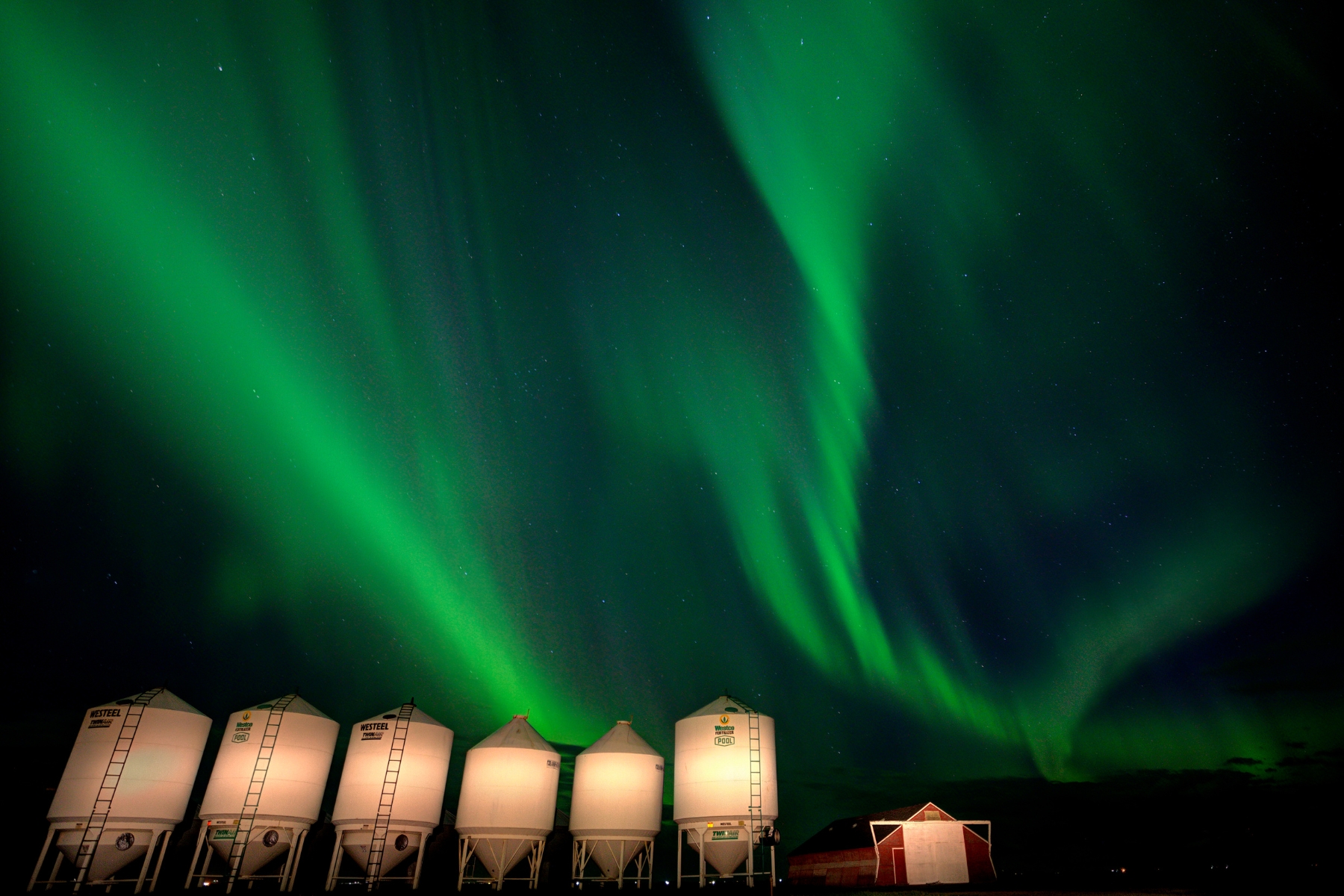
The northern lights, scientifically known as the Aurora Borealis, are a spectacular natural phenomenon in which bright lights dance in the night sky. This occurs when charged particles from the sun collide with Earth’s magnetic field.
The result is a kaleidoscope of colors in the sky, with the most common color being green, but they can include pink. If you’re lucky with a strong aurora, they’ll turn white or violet. It’s one of the most incredible sights you’ll ever see in the sky. We’ve been lucky enough to witness them numerous times in our lives.
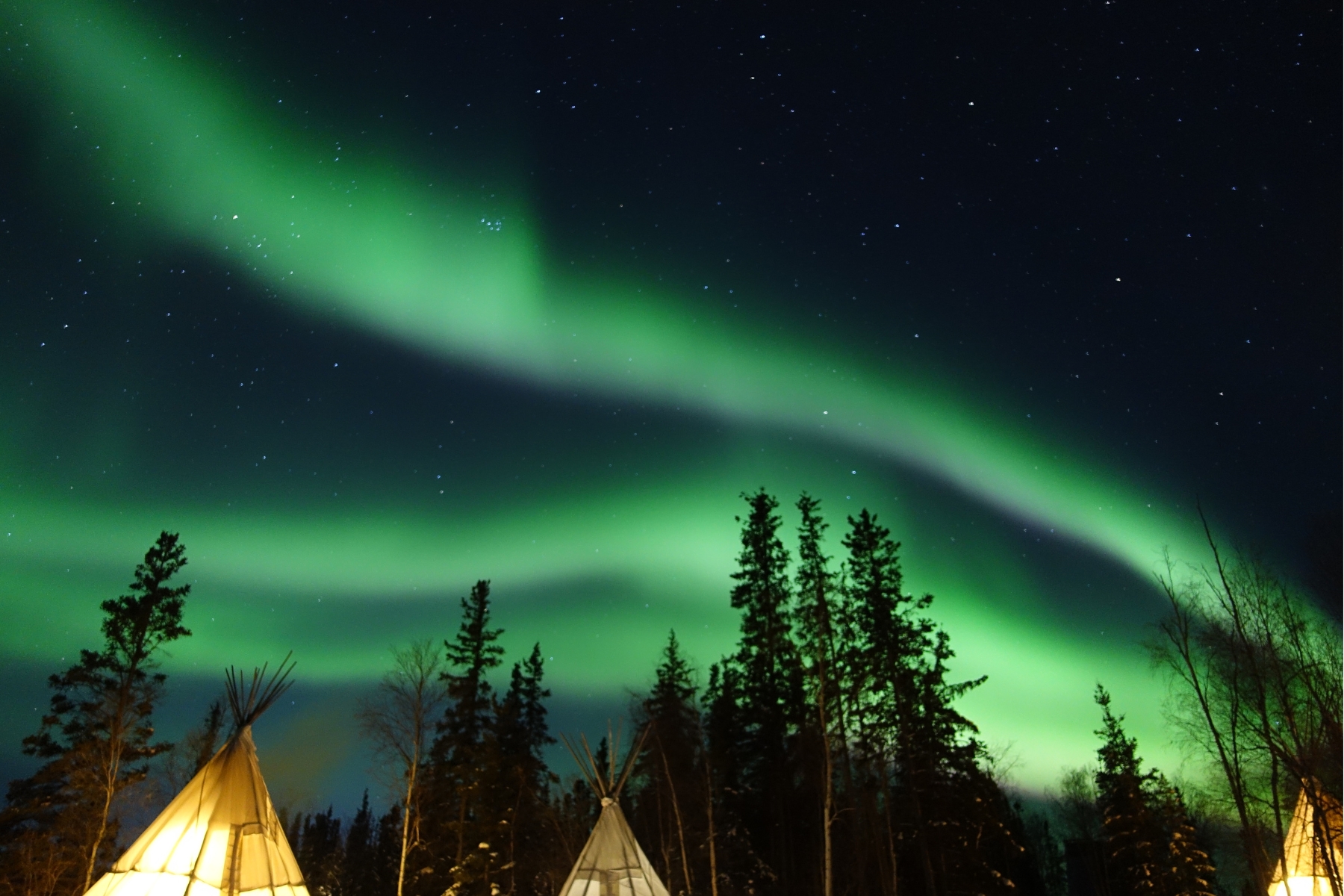
The Indigenous People believe that the “northern lights represent this timeless energy, a timeless energy period of when our ancestors lived on this land.” It is their “ancestors in the sky, and what that means literally and figuratively is we’re not alone on this planet.” They believe that the lights should be treated with respect and that even looking at them may be seen as a sign of disrespect.
They are most visible in the lower polar regions, best delineated by the Arctic Circle. At those latitudes, the northern lights are visible almost every night. However, as Alberta sits quite a bit south of the Arctic Circle, they are visible during times of high activity.
The Dark Skies Of Alberta
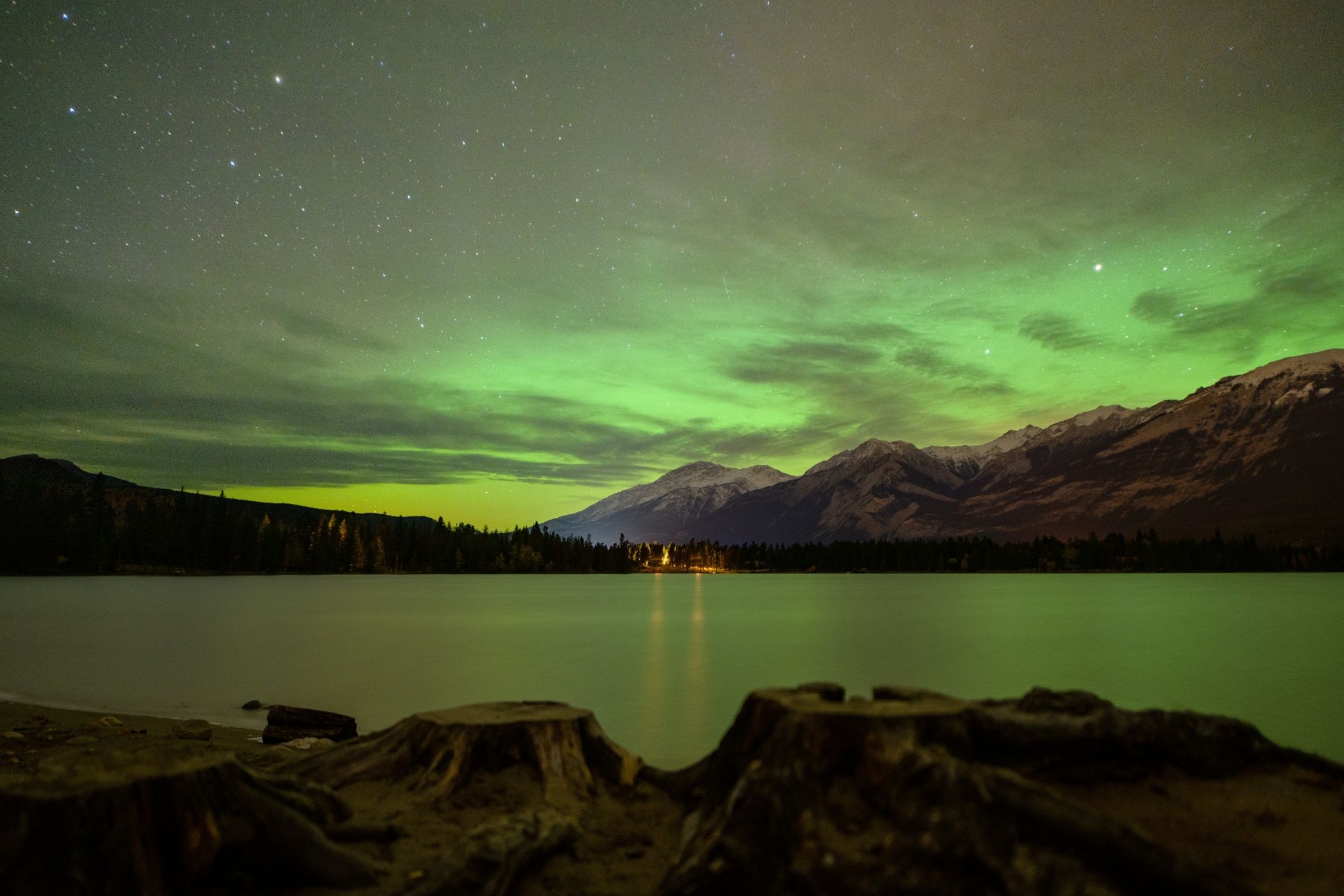
Alberta happens to be home to some of the world’s largest dark sky preserves with Wood Buffalo and Jasper National Park. This means there are strict laws and regulations to minimize any form of light pollution. It ensures amazing night sky viewing experiences even if you aren’t lucky enough to spot the northern lights.
As locals, we’re spoiled by the night skies and often forget that most don’t enjoy a sky littered with more stars than we could ever hope to count. It doesn’t matter if the northern lights appear, as it’s still wonderful observing the night sky on a clear night.
While many visitors to the province experience the night sky of Alberta from the deep mountain valleys of the Canadian Rockies, the plains offer the best night sky viewing experience. The uninhibited night sky presents an amazing opportunity to view the northern lights.
When Can You See the Northern Lights in Alberta?
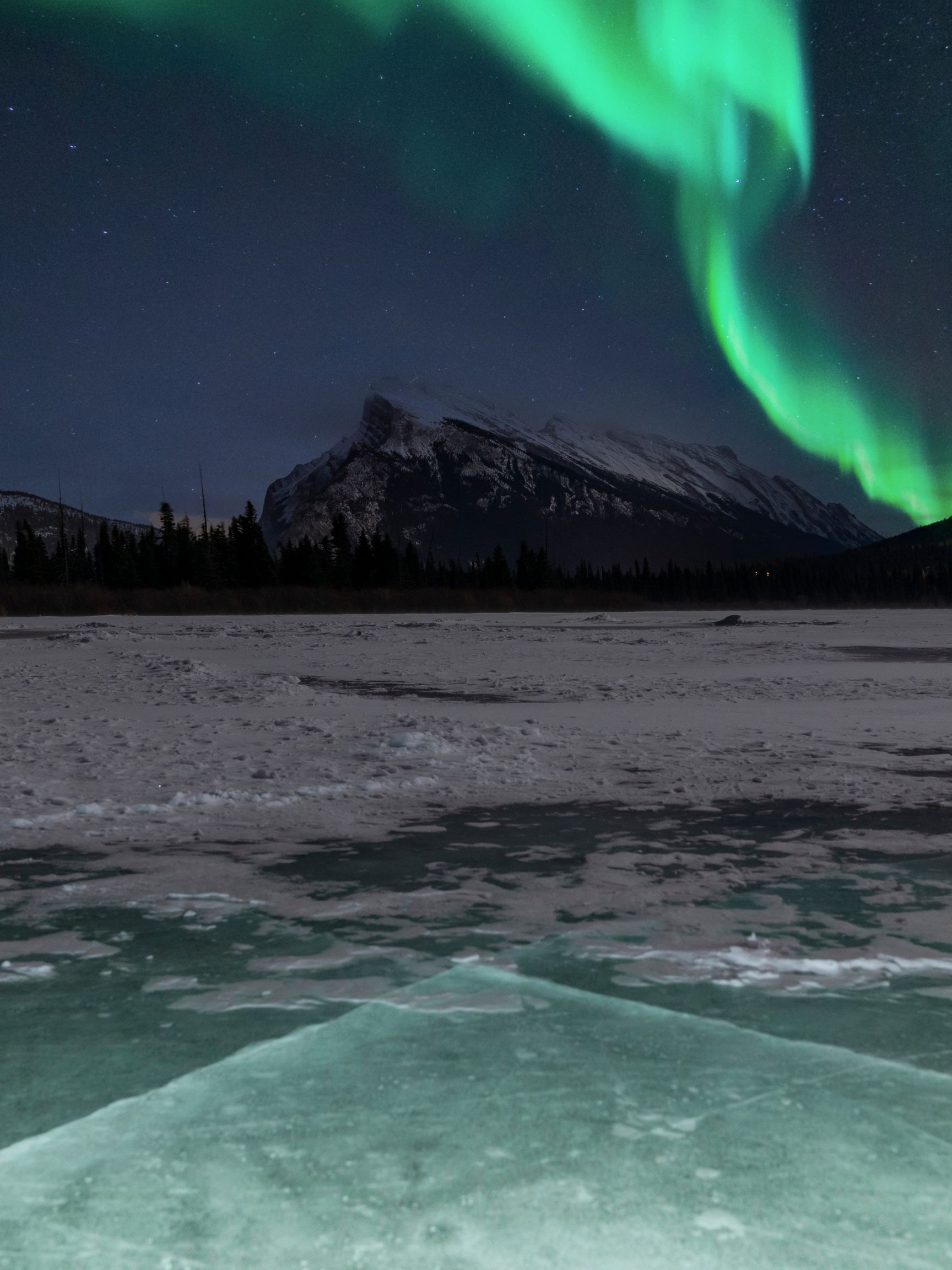
It’s impossible to predict exactly what day the aurora borealis will appear. The aurora borealis can shine at any time of year, but they are best from October to mid-April, when the night sky is darkest. Generally, the northern lights in Alberta shine their brightest during the winter months of December to February.
Your best chance to see them is on clear nights with a new moon. Keep in mind they are geomagnetic activity and have their own set of circumstances; just because it’s a clear night does not mean the northern lights are visible or active.
Don’t count out the summer months, as it is possible to see them anytime. However, it is not likely. Word of warning, if they appear in the summer months, it will likely be around 2:00 to 3:00 in the morning as nights are quite short. Personally, we have never seen the Northern Lights during the summer months in Alberta, but it does happen a few times a year!
Tips For Viewing The Northern Lights In Alberta
Learn The Science Behind The Northern Lights
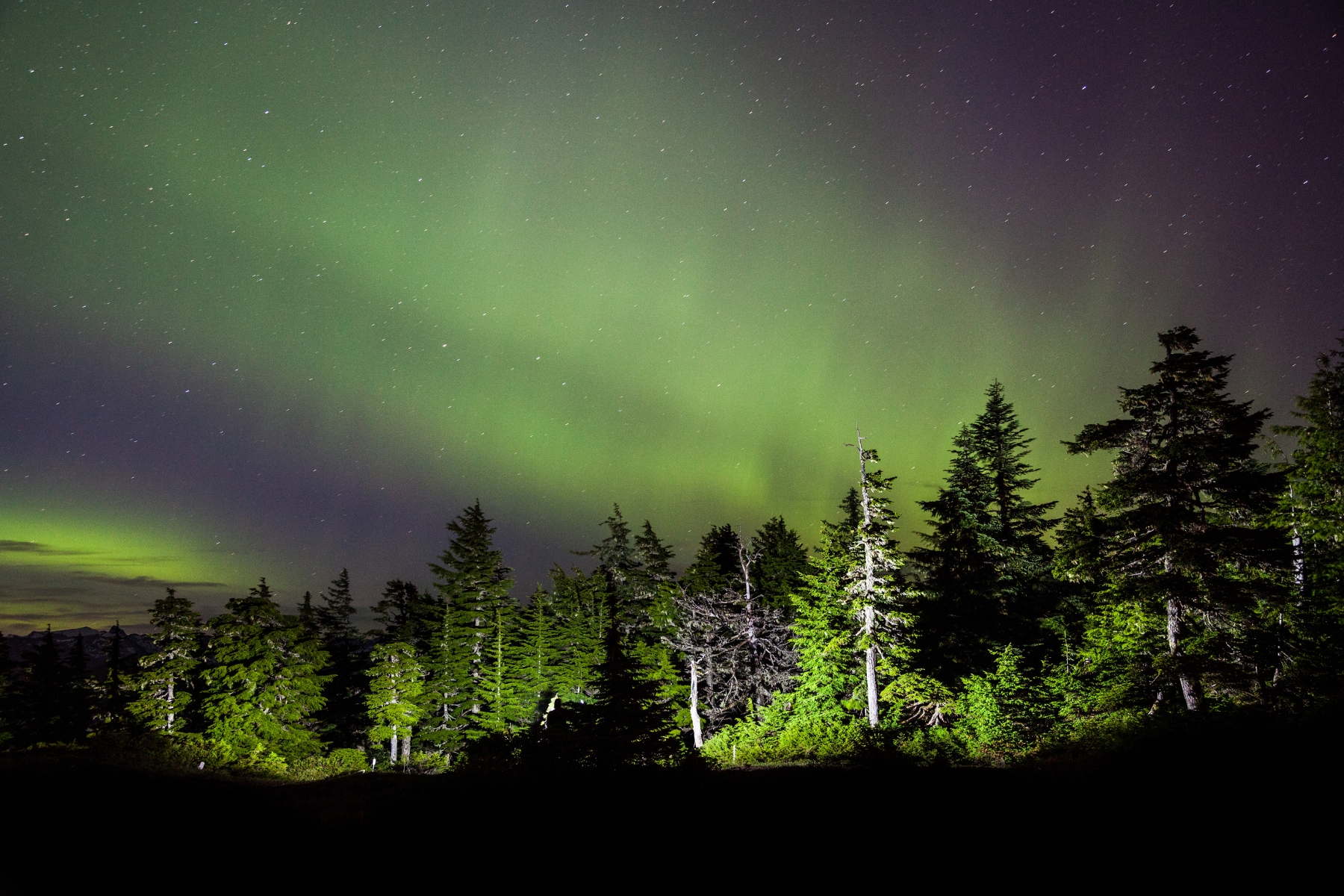
The northern lights result from an interaction between the charged particles of the sun and the Earth’s magnetic field and atmosphere. Solar winds hit the earth’s magnetosphere, creating exciting gases in the atmosphere that release energy in the form of vibrant colors like green, red, purple, pink, and white.
As they are the result of solar weather, it is possible to check an aurora weather forecast. Scientists are always watching the solar radiation output from the sun and release forecasts for the public. The Geophysical Insitute at the University Of Alaska’s Fairbanks and the University of Alberta’s Aurora Watch are great forecasts. We highly suggest you sign up for the Aurora Watch email list, as they will notify you when there is a chance to see the northern lights in Alberta.
Geomagnetic activity drives the display of the northern lights, which can be charted and measured. The level of geomagnetic activity is indicated by the planetary K index or the Kp. Forecasts provide a scale that ranges from 0 to 9. A good showing of the northern lights will be above the 6 on the Kp index.
Kp refers to a scale of numbers between 0 – 9 that is known as the planetary index. A 9 on a clear night in will be a full-blown show, though even a 3-4 can be visible, as the scale is a great barometer to how far south the lights will be visible. Typically, a decent show in Alberta is around 5+ on the Kp index. Download an app to help you watch the Kp index.
Dress Warm
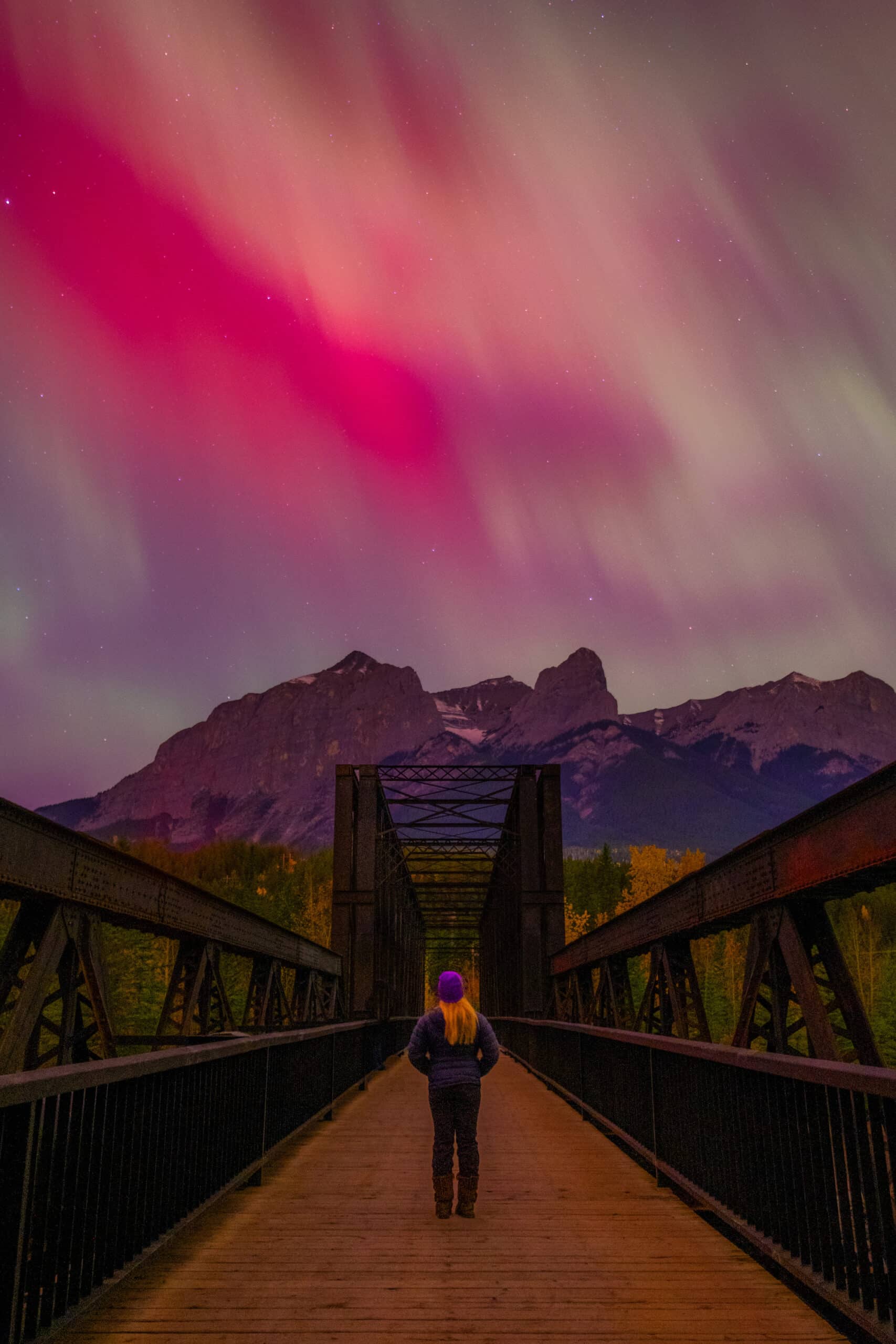
It should go without saying, but nights in Alberta can be bitterly cold. We suggest wearing your warmest clothing to watch the night sky. Unlike most times when you’re out in the cold, you won’t be moving around much watching the northern lights. Skip the ski jacket, as they’re made for moving around.
Weather
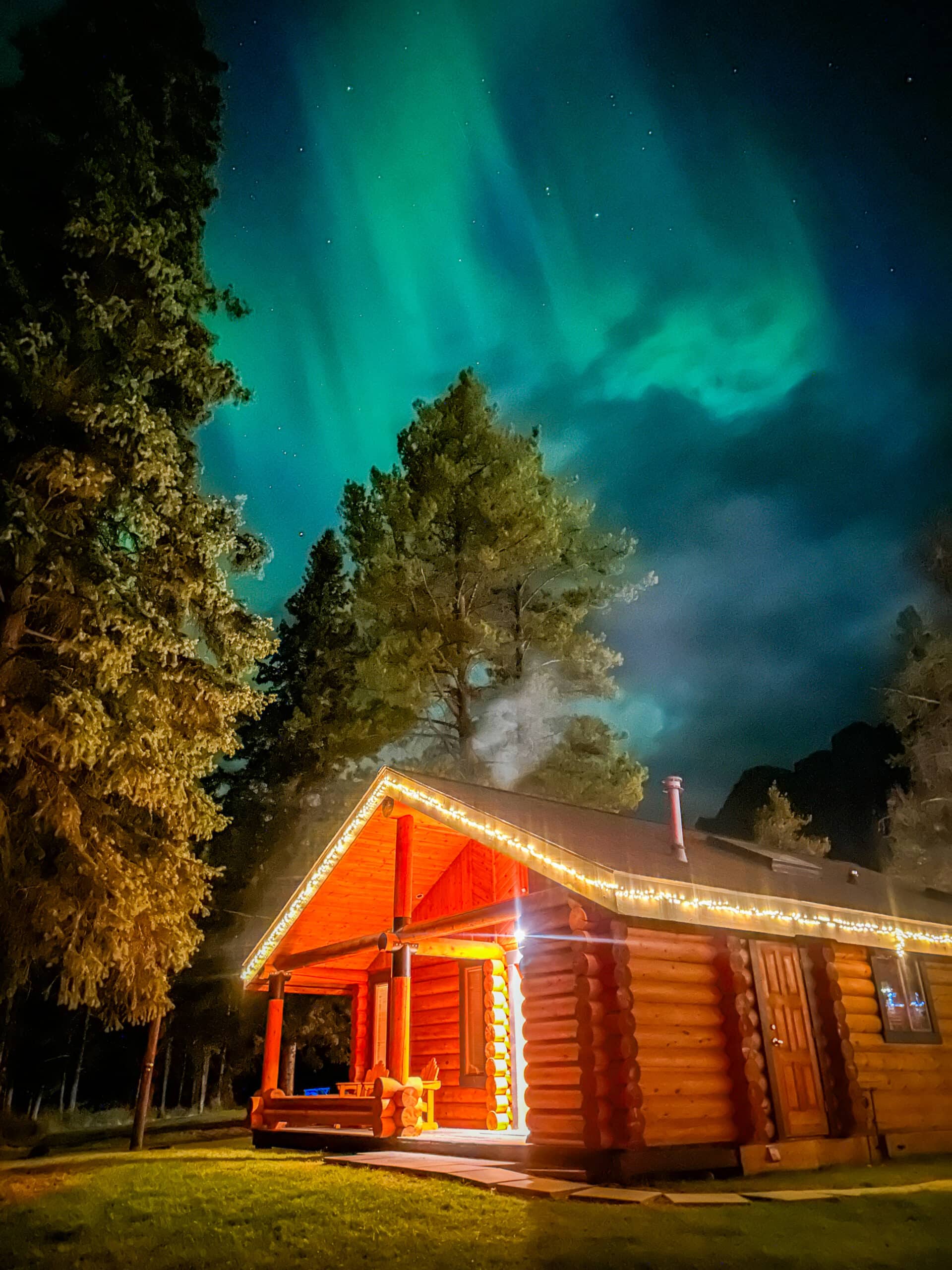
The weather is another important variable that impacts your ability to see the northern lights. Cloud cover can often impede the ability to see the lights even during an active event. Checking the cloud cover forecast beforehand is a good idea if you’re debating staying or going out to see the lights.
Timing
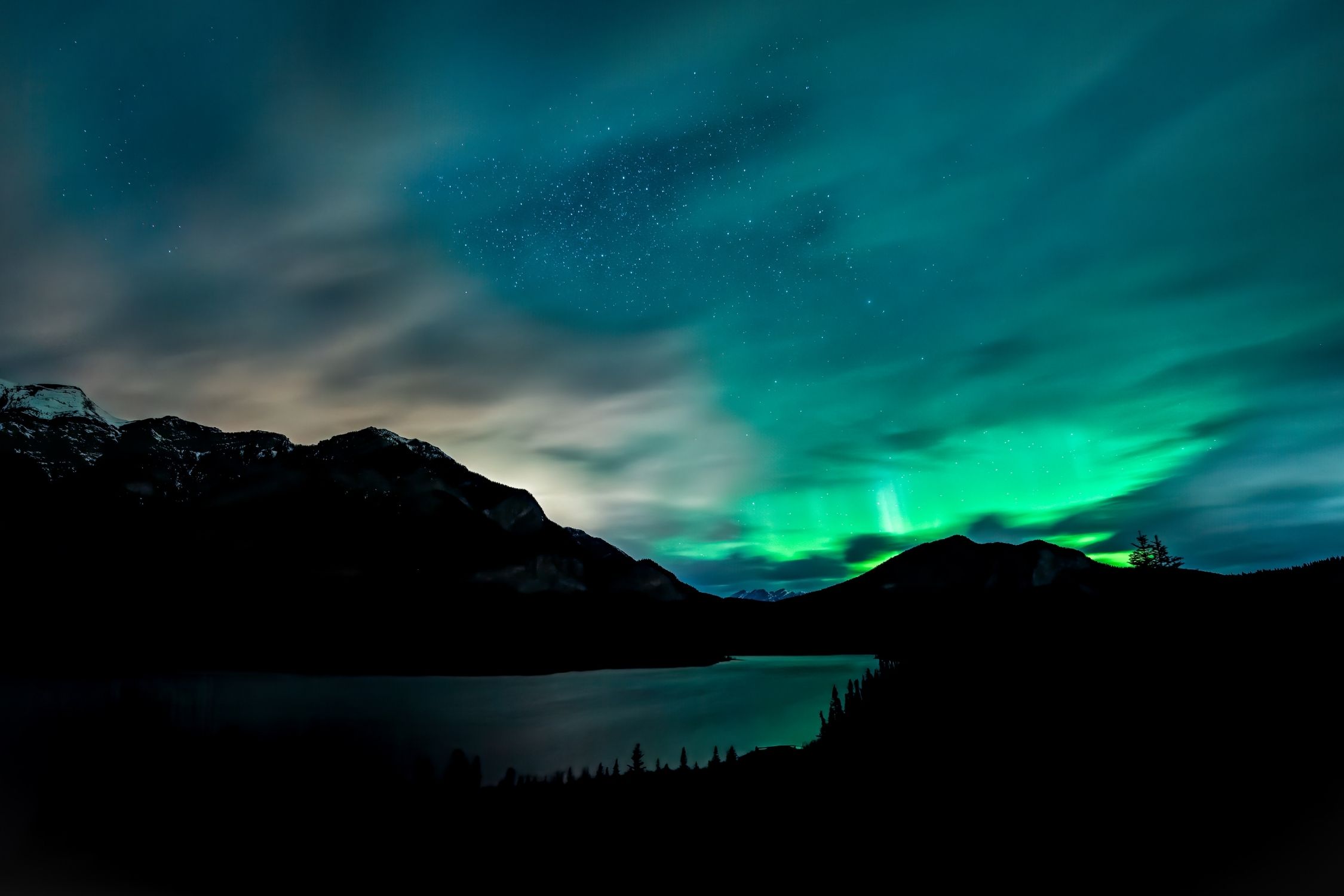
The best time to see the aurora is usually several hours before and after midnight (10:00 pm to 2:00 am). As the geomagnetic activity increases, so do the active hours towards the evening and morning. While it may be visible during these times, it’s unlikely to be as vivid as during peak hours.
The spring and fall equinoxes are the best seasons to watch the aurora. This is due to the solar wind interaction with the Earth’s magnetosphere. The most spectacular northern lights in Alberta were during the spring equinox. That said, hours of darkness are shorter in the spring, so if planning trips for the northern lights, it’s better to aim for the fall months.
Lunar Cycle
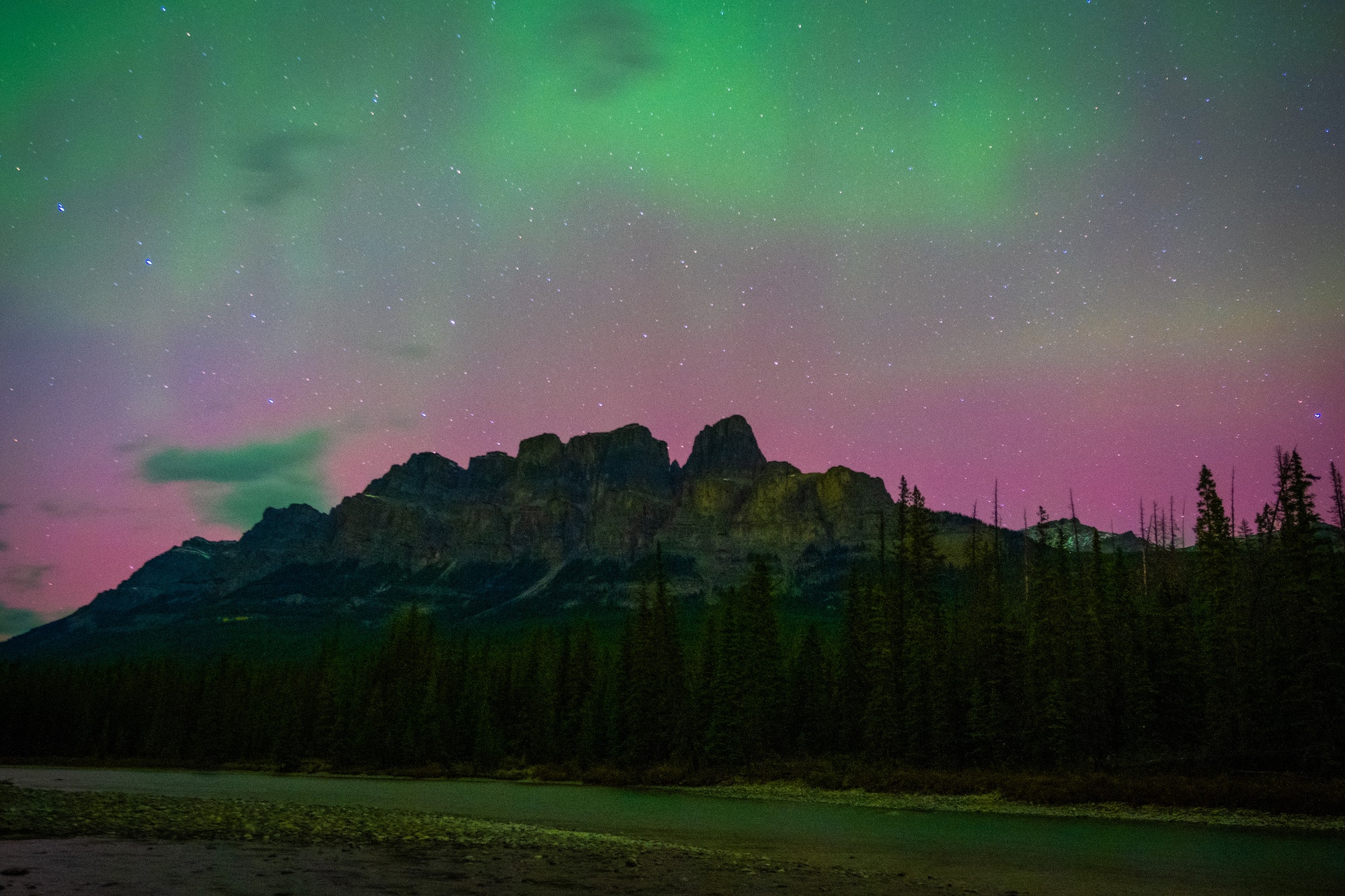
Another factor to consider when viewing the northern lights is the lunar cycle. The moon is the brightest object in the night sky, so a moonless sky is ideal for viewing the northern lights, particularly if you plan to photograph them.
A Thermos Is Key
No one will ever complain about bringing a hot drink while staring at the sky in the cold. I love bringing decaf tea in a thermos, but hot chocolate is a classic!
Plan to Lose Some Sleep
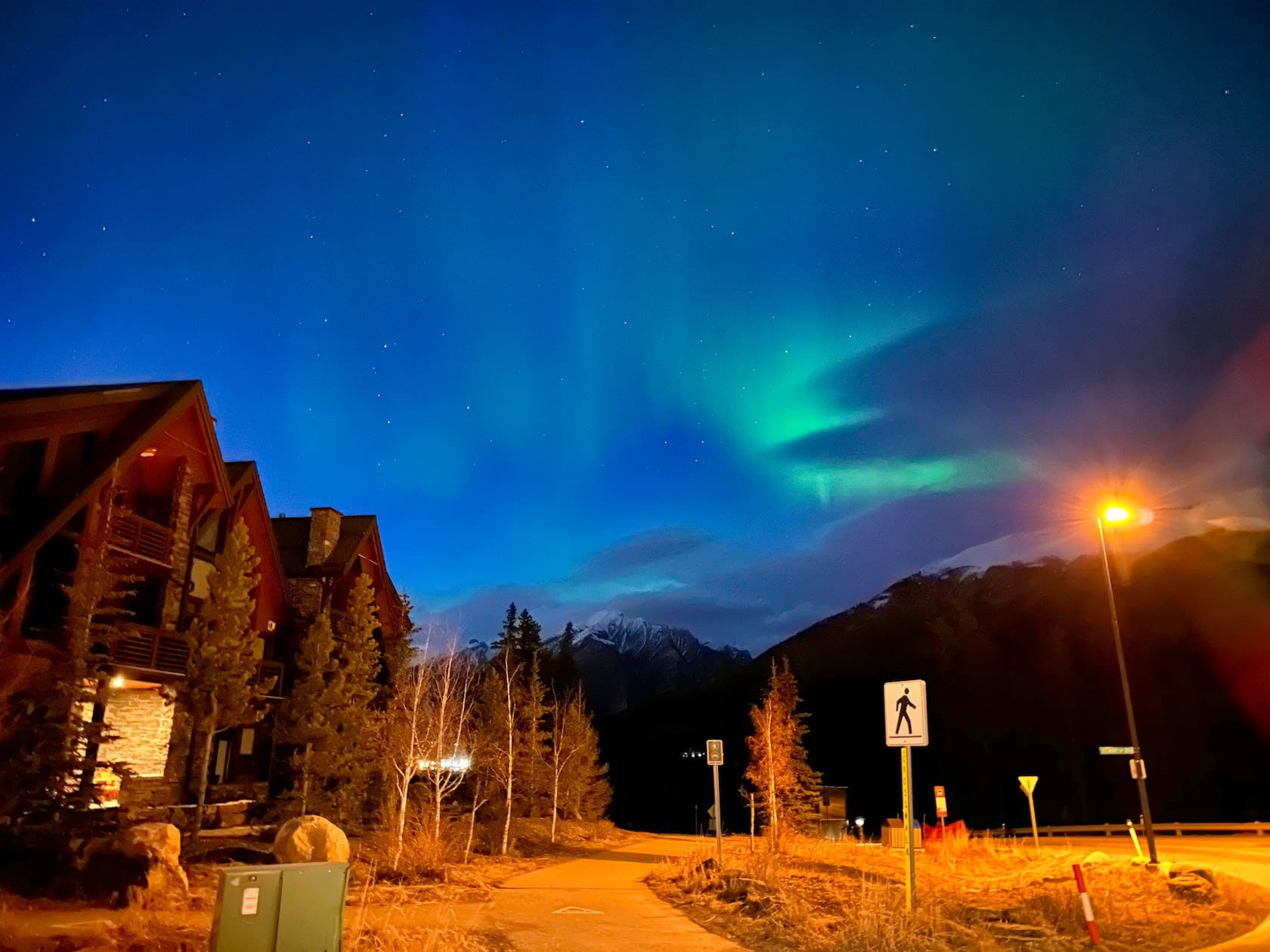
The northern lights aren’t on a nice and convenient schedule where you can expect to see them every night at 9:00 pm. Some nights, they’ll appear early, while others may be just after nightfall.
You won’t need to stay up all night, but if you are hard set on trying to see the northern lights in Banff, you should be prepared to be woken after falling asleep in the middle of the night or staying up and not hitting the sack until 2-3am.
Top Locations For Viewing The Northern Lights In Alberta
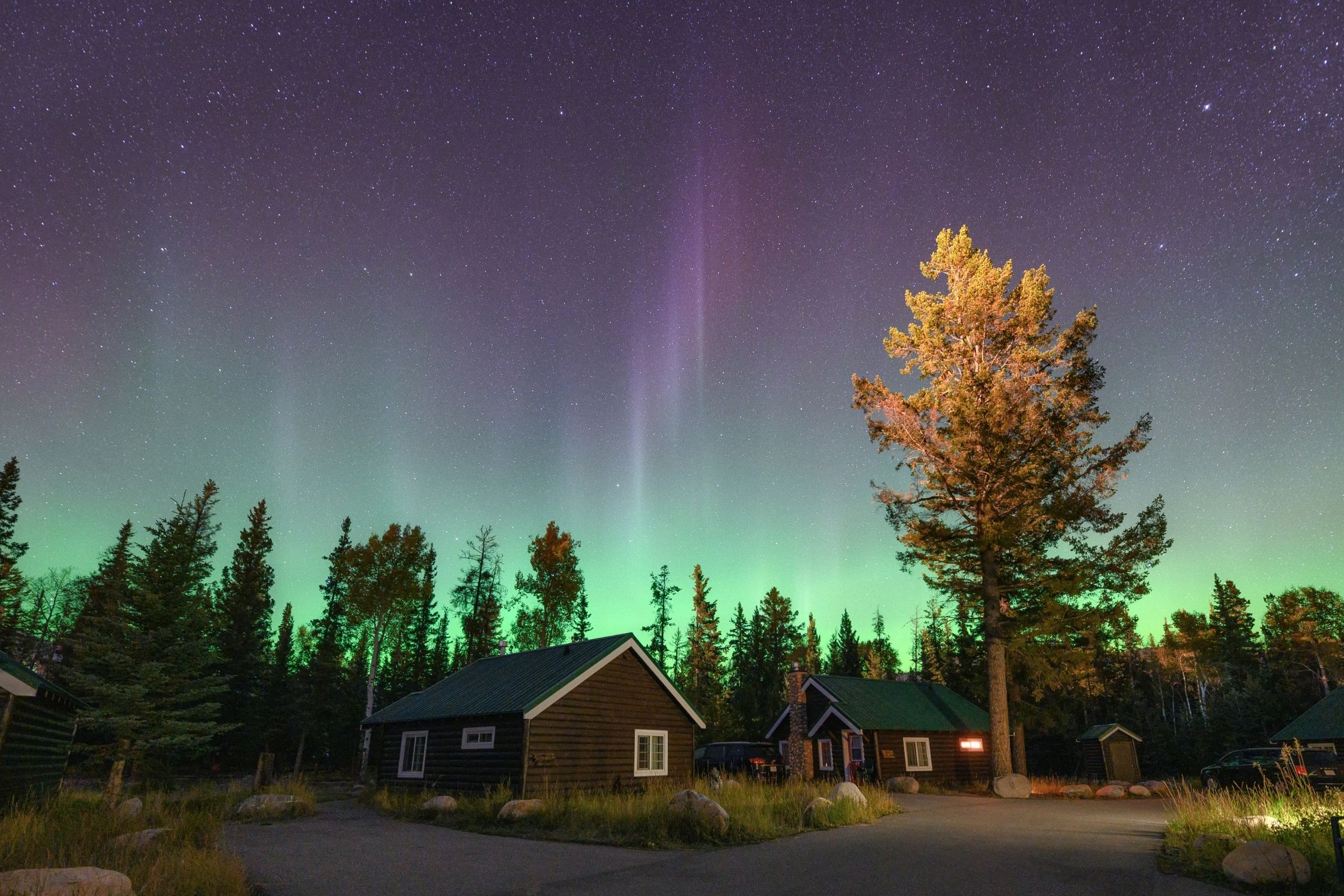
Elk Island National Park – Beaver Hills
Located east of Edmonton, this designated dark sky preserve encompasses Elk Island National Park and the Cooking Lake Blackfoot Provincial Recreation Area. It is a frequent meeting place for the Royal Astronomical Society of Edmonton. Elk Island National Park offers numerous vantage points to observe the northern lights, particularly when the weather forecast is favorable.
Jasper National Park
Naturally, the small Alberta town of Jasper is an exceptional place to photograph the night, thanks to its designation as a dark sky preserve. We suggest Pyramid Island, the toe of the Athabasca Glacier, Old Fort Point, and Maligne Lake for viewing the night sky in Jasper.
Wood Buffalo National Park
The large wilderness expanses of Wood Buffalo National Park are superb for viewing the night sky and possibly the Aurora Borealis.
Slave Lake
Slave Lake, is an ideal location to witness the mesmerizing northern lights due to its northern latitude, minimal light pollution, and clear skies, providing optimal conditions for a spectacular aurora borealis display.
Banff National Park
This is the most popular spot for international visitors, while the valley can obstruct night sky views. Banff’s towering peaks and glacier-fed lakes create stunning vistas for viewing the northern lights in Alberta.
Photographing The Northern Lights

If you see the lights, it’s only natural that you’ll want to take a few photos. If you plan to photograph the northern lights or do any night photography, you’ll need a tripod and a camera with manual controls.
A typical Northern Lights shot takes around 30 seconds and requires the camera to be stationary. Before your trip, head out to a quiet, light-free place and practice nighttime photography to learn the basics. It’s best to play around and learn all about different ISO settings, apertures, and shutter speeds.
Plan Your Trip to the Canadian Rockies
- We now have an interactive map! With over 350 stops and pre built itineraries around the Canadian Rockies, our personal map and guide is your one stop shop to an epic trip here.
- Recommended Experiences: There are many things to do in the Rockies, but our top recommendation is the Banff Gondola – a must do experience! Want to get up close and personal with a glacier? We cannot recommend this Icewalks tour enough! See more of our recommendations.
- Planning your visit to Moraine Lake and don’t want to deal with the Parks shuttles? We recommend using Moraine Lake Bus Company, Fairview Limo (leaves from Lake Louise Village) or booking with ViaVia (these leave from Banff/Canmore).
- Hotels in the Rockies: There are many places to stay, from luxury hotels to wilderness cabins. See all our favorites here.
- Get Around: We suggest renting a car to get around. You can search for rental cars on Discover Car. For a campervan trip, you can check prices and compare on Outdoorsy. Don’t forget the Guide Along Audio App for driving the Icefields Parkway (Use our link for 25% off!)
- We can help you plan your 2025 trip to Western Canada! If you’re feeling overwhelmed by planning we can assist! We’ll hop on a 1 on 1 phone call, and PERSONALLY go over your itinerary, and will save you previous time and money with our personal recommendations. Calls are followed up with detailed trip notes afterward that I write myself. See our services here.
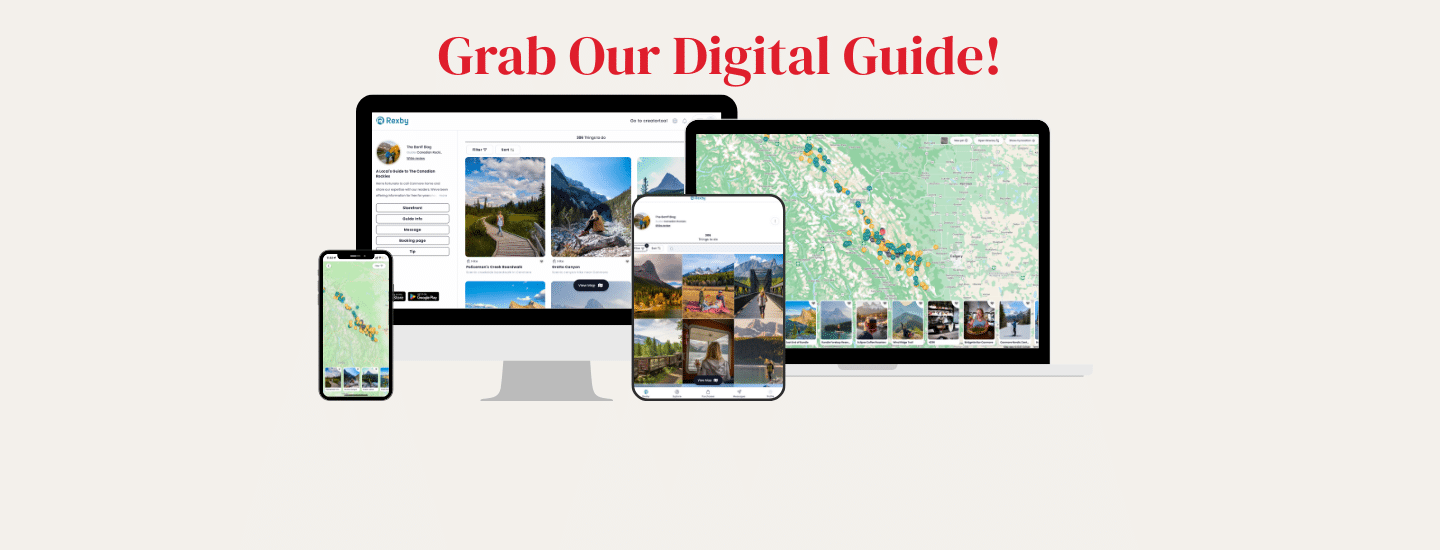
New in 2025! We just released our local guide to the Canadian Rockies! Discover 300+ hidden gems, hikes, and cabins not found in your typical guidebook. We’re offering a 10% off intro offer using code BLOG10 at checkout!

